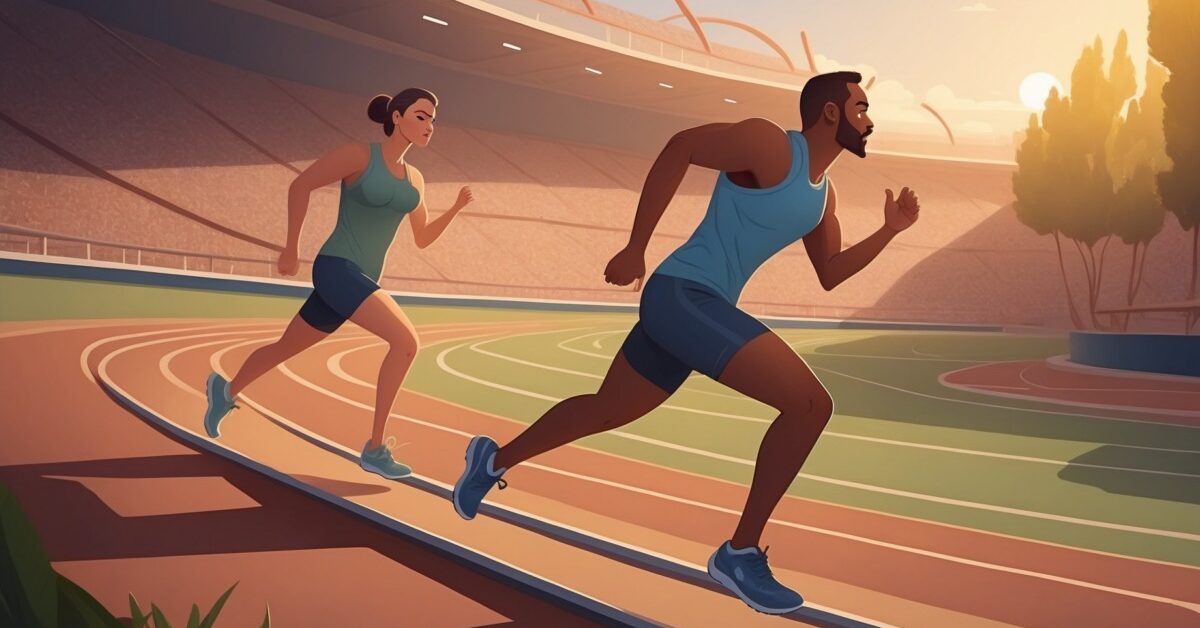Biotechnology can be used to improve athletic performance and recovery in sports, from genetic profiling, stem cells, and wearable technologies. As the 2024 Olympic Games are approaching, we take a look at how biotechnology is helping to revolutionize sports performance worldwide, as well as how it could also potentially bring certain downsides and ethical concerns to the sports industry.
Table of contents
Regenerative medicine and genetic profiling: treating and preventing sports-related injuries
Injuries are one of the biggest problems for athletes. In the European Union (EU) alone, sports injuries account for around 6.2 million people annually needing hospital treatment. But, thanks to the advancement of stem cell therapy and regenerative medicine in recent years, biotechnology can now be used to treat sports-related injuries, such as torn ligaments and cartilage, as well as aid recovery after surgery. In fact, sports stars like Rafael Nadal, Mike Tyson, and Cristiano Ronaldo have already reaped the benefits of stem cell treatment to recover from their injuries.
This type of treatment essentially accelerates the healing process by regenerating damaged tissues. It is now widely used in sports to treat injuries such as tendon inflammations, muscle strains, degenerative disc diseases, and even bone fractures. The procedure reportedly comes at a cost between €4,000 ($4,297) and €16,000 ($17,186).
When it comes to broken bones, another treatment revelation has come from Swedish biotech company Bonesupport, which has developed an injectable, moldable, and drillable synthetic bone void filler called Cerament. It fills gaps in the bone to promote healing and, according to the company, is ideal for minimally invasive surgery and open procedures where bone remodeling is required.
Furthermore, sport-related injuries could even be prevented in the first place through the use of biotechnology. Genetic profiling allows athletes to understand their unique genetic predispositions, including muscle fiber composition, recovery rates, and susceptibility to certain injuries, such as knee or ankle sprains. This information can then be used to create customized training and rehabilitation plans to lower the risk of injury in the future. Companies like 23andMe and DNAfit offer insights that enable these sorts of personalized training plans.
Sports wearable technologies: real-time performance monitoring
Sports wearables have developed far beyond simple fitness trackers. Now, with the help of biotechnology, wearables can be used to monitor athletes’ biochemical markers, hydration levels, and even blood oxygenation, all in real-time. They can also help athletes monitor their training load, optimize their technique, detect fatigue, and prevent overuse injuries. For example, a smart shoe can measure the foot strike pattern and provide feedback to the runner to improve their running efficiency and reduce the risk of injury.
According to Global Data, there are currently more than 330 companies, spanning technology vendors, established sports companies, and startups, engaged in the development and application of wearable biosensors.
Doping challenges: the ugly use of biotechnology in sports
The unauthorized use of drugs in order to enhance performance has always been an issue in sports. For example, the doping agent erythropoietin – a hormone normally produced and released by the kidneys that acts on bone marrow to augment the production of red blood cells – was behind the Tour de France doping scandals that saw cycling legend Lance Armstrong stripped of his titles. And, there are now growing concerns surrounding “gene doping,” which refers to the illegal use of gene therapy by athletes in order to improve their performance in sporting events.
One example of a gene therapy with potential for doping is Repoxygen. It was originally developed for the treatment of anemia but was never tested on humans, and it consists of a segment of DNA designed to stimulate the synthesis of erythropoietin. The DNA is packaged in a viral delivery system, which enables the foreign DNA to be transferred to host cells, where it becomes integrated into the cells’ own DNA. The gene insert then instructs cells to synthesize erythropoietin, in turn increasing the amount of red cells that go on to increase the oxygen-carrying capacity of blood. Ultimately, this improves aerobic capacity, which refers to the level of fitness needed for athletes to perform at an elite level in sports.
Other genes have also been identified as possible targets for gene doping, including those that encode insulin-like growth factor 1, human growth hormone, phosphoenolpyruvate carboxykinase, and peroxisome proliferator-activated receptor-delta.
Perhaps the biggest potential issue here is the detection of gene doping. While certain gene therapies like Repoxygen can generally be detected through DNA sequencing of suspected abusers, other substances and techniques used to manipulate genes – of which there are hundreds that could be modified – may not be easily distinguished from substances that occur naturally in the body. This could mean that athletes involved in “gene doping” could go undetected in the future, causing a major debacle for the sports industry.
Having said that, at this moment in time, biotechnology is largely used for good in the industry and can be a valuable asset to athletes, having a significant impact on sports performance and recovery. And, as technology continues to evolve, its impact will undoubtedly become more profound, offering athletes unprecedented ways to excel – in a legal and respectable manner.





